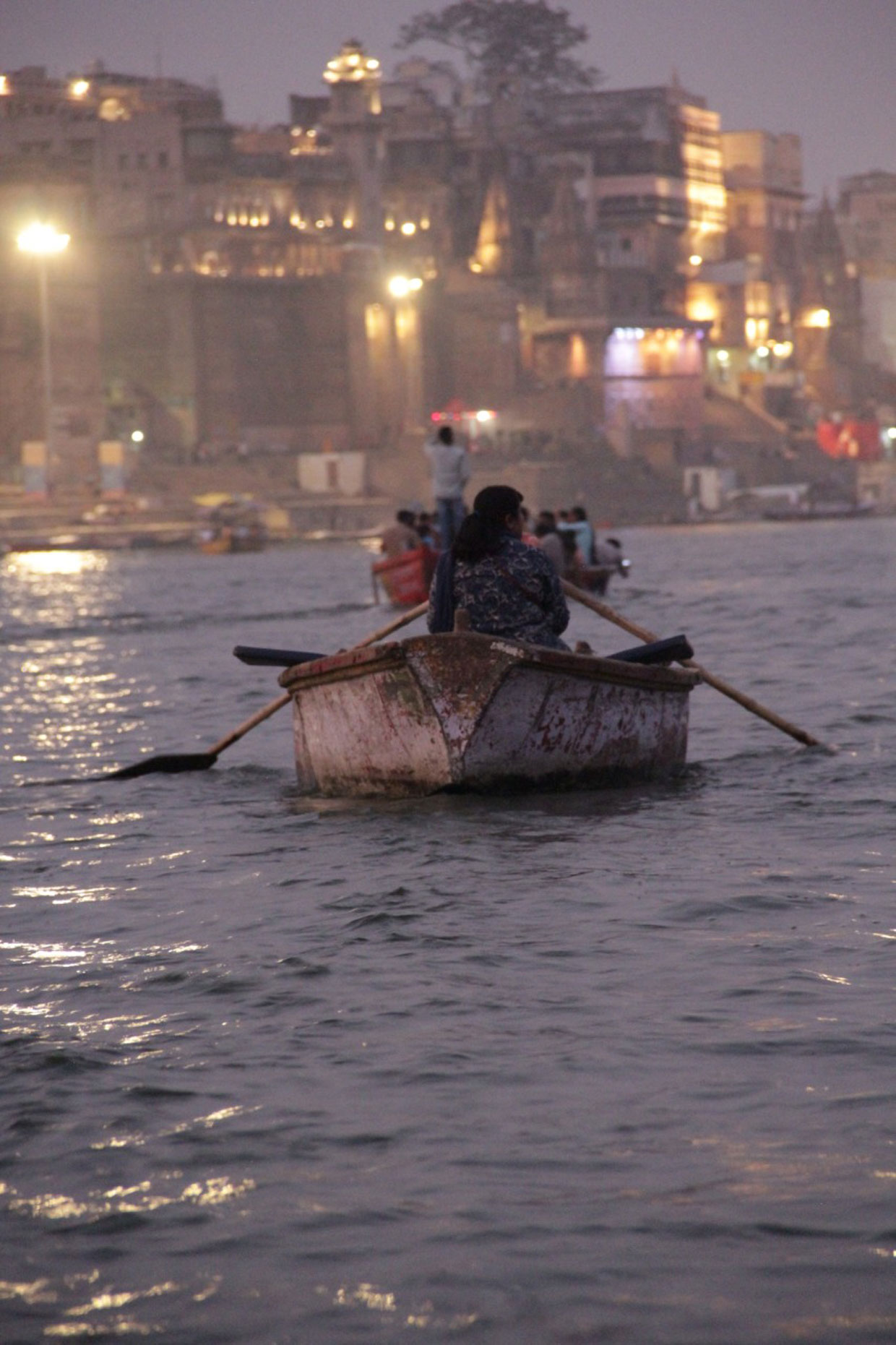


Mystic Varanasi, India's holiest city as a place of spirituality and meditation
Varanasi, one of the world’s oldest, continually inhabited cities, is buzzing with people, temples, vehicles and farm animals. That is a stereotypical image most foreigners have been exposed to so far.
This city is also well-known worldwide for its Jacquard silks and heritage looms.
Surviving the test of time, Varanasi is a sacred place of transitions with people going there specifically to die and be cremated along the Ganges River banks. The belief is that those who do so will liberate the soul from the eternal cycle of birth and rebirth, attaining salvation or ‘Moksha’.
The Ganges seems to self-purify when it reaches Varanasi. Many believe that taking a dip in the Ganges in this specific place will wash away all sins, diseases and negativity.

While this is all true, a recent trip prompted me to reflect deeper on the whole fashion industry and its impact on our planet.
Fashion's impact on the planet as seen from the Ganges River banks
I walked every day to the sacred river, lovingly called ‘Ma Ganga’, which is known to be highly polluted in some places and at the same time extremely sacred in others.
In a documentary, two American scientists set out to test the river’s waters from its source to its delta, checking oxygen levels in various towns along the river.
One of the most shocking results was in Agra, where leather factories have poured unbelievable amounts of chemicals into the river.
Yet, somehow, the river cleans itself, and once it reaches Varanasi, it shows higher oxygen levels!
India's handmade luxury textile culture and heritage vs. high pollution rates
But this was not really the thought that lingered. I was more intrigued by the number of shops and street vendors selling clothes – really cheap ones!
India has a rich culture of sustainable practices and high-end handmade textiles. So what’s with all the pollution?

India's rich culture of responsible practices and luxury handmade textiles
This argument confirmed what is often missing when we discuss the fashion industry: the luxury segment is not the main issue and never has been.
Luxury fashion sustainability is not the key issue when discussing that there are too few environmentally conscious clothing companies, but the Western model of consumption is
Dr Kirsten Scott, Programme Leader for Postgraduate Fashion and Research Lead at the Istituto Marangoni in London, says: “There are so many great projects and support for artisans in India that the country could be leading the way for the rest of the world rather than contributing to the problems – and I think this is where the need for decolonisation comes in, as we are imposing a Western model of fashion and consumption on India through the media, when instead India has so much to offer us.”
The legacy of handcrafted textiles in India
The educational documentary The True Cost exposes many of the industry’s malpractices; however, I found that it focuses too much on images from luxury fashion companies when discussing a fast fashion issue.
The massification of luxury and sustainability in fast fashion: is the industry taking a green future seriously?
Although there is always more to be done to attain pure responsibility, luxury has always been mostly sustainable. The problem lies in the lower segments of the fashion pyramid, where mass consumption occurs.
In Dana Thomas’ book ‘Deluxe: How Luxury Lost its Luster’, the author points out that with the massification of luxury over the last decade, many high-end brands have also knowingly used the same fast-fashion factories for some productions.
It is clear that the masses need affordable clothing, but they also have the right to adopt trends and express themselves through fashion!
But the question is ‘do consumers really need to buy new clothes every week?’
The pieces produced by the clothing industry have become so affordable that many consumers even prefer to buy new clothes more regularly rather than wash them.
The other question is about durability; mass fashion is cheap but not durable, which leads to high levels of repeat purchases – according to a strategic business model.
Vivienne Westwood's eco-friendly, luxury-oriented approach and India’s huge social gaps
I agree with Dame Vivienne Westwood’s answer to all this: ‘Buy less, Buy Better’. However, here comes the problem of significant social gaps in India, which prevent the majority of this great democracy from affording true luxury. As an example, cashmere shawls range from 100 euros to 5,000+ euros.
The whole fashion system needs to be rewired
Luxury fashion innovators adopt new trends each season, which eventually trickle down to the masses who would like to have the looks, only in cheaper, more affordable versions. The fast-fashion industry caters to this specific need and market.
So how can we tackle this issue? There is a whole industry, and many livelihoods depend on that market segment.
On the one hand, we have a social responsibility towards the workers in the fast-fashion industry. On the other hand, we all have an environmental responsibility towards our planet, which unfortunately is not self-cleaning!
Maybe retraining machinists to become artisans might be one way, but the volume might be too overwhelming. Fast fashion will need to sell less but at higher margins.
Open call for the future of fashion sustainability
The issue calls for a significant systemic change if we are to tackle the problem at its root, and critical action is still to educate consumers to make more informed decisions.
Hopefully, the new generation’s wokeness is a sign that change is already happening.
Mevin Murden
Director of Education, Mumbai



